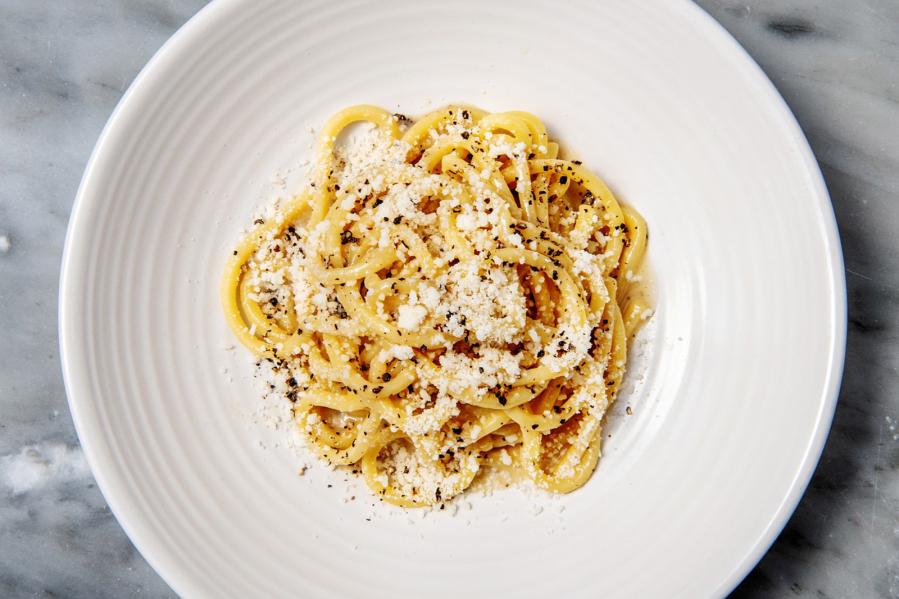LOS ANGELES — In 2010, chef Evan Funke spent 23 days in Rome eating cacio e pepe.
“I saturated myself in order to understand this dish because I was so intrigued by it and flabbergasted by its simplicity,” he said.
Cacio e pepe is traditionally made with just four ingredients: Pecorino Romano cheese, black pepper, pasta and pasta water. It’s named for two of them. Translated from Italian, cacio e pepe means cheese and black pepper.
The allure of a dish made with so few ingredients is indeed rooted in its simplicity, in its intensity of flavors and textures. When made just right, the cheese melts into the reserved pasta water and clings to the pasta, creating a creamy sauce. The black pepper is abundant and sharp, with an unforgettable, addictive bite that hits like a shot of pure dopamine.
In Rome, Funke ate everything from the worst iteration to the most “life-changing dogmatic versions,” made with tonnarelli, spaghetti, spaghettini, rigatoni and every pasta in between. He encountered creamy cacio e pepe and dry cacio e pepe. At times, an abundance of pepper made him want to choke. Some restaurants ground their own pepper; others used dust so fine it looked like it came out of the red McCormick box in your mom’s pantry.



